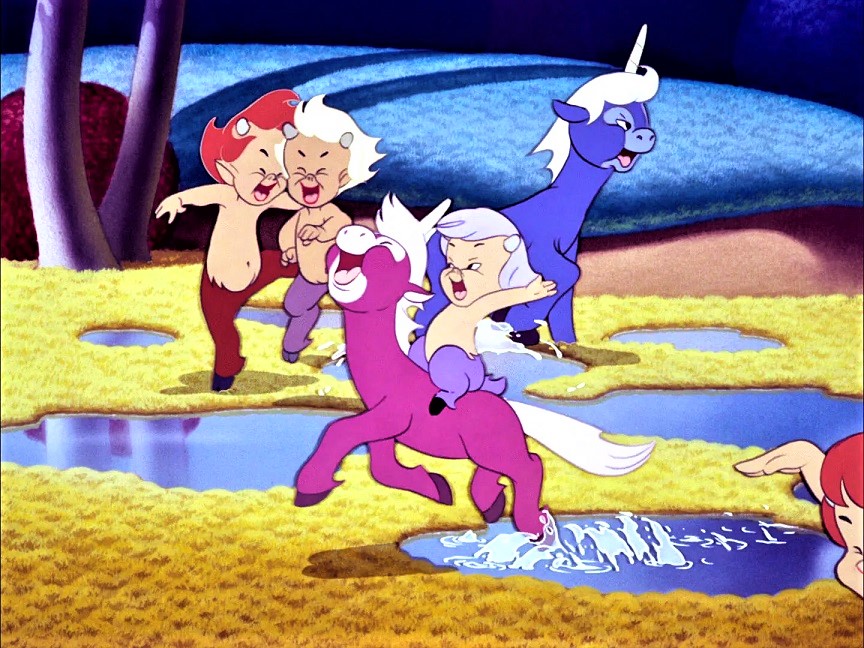Walt Disney’s film that revolutionized the art of animated film.
By: Christian Nielsen
Whoever has not seen “Fantasia” has not been a child or, at least, has not had someone in the family who has seen it in his childhood. This creation of Walt Disney celebrates today modest 82 years of having been released in the United States.
Someone will say, “it’s just a cartoon”. Of course it is, what today is simply known as animation. It is also about pigeonholing it as a work for children, which it clearly is. However, it would be impossible to calculate the millions of adults who saw it around the world under the pretext of taking their son, nephew or grandson to the movies.
But apart from being an inexhaustible display of fantasy, the film is also a first-rate musical, an important plot development and a work that introduced technical and formal innovation to cinematography.
INNOVATIVE SOUND
Walt Disney spared no money on directors. This work had 9, starting with Jim Algar, who after debuting with Fantasia in 1940, was in charge of another 18 films of the genre, four of which gave him an Oscar and two the Berlin Golden Bear. Algar would close his career directing Fantasia 2000, premiered in December 1999 at New York’s Carnegie Hall and produced by Roy Edward Disney, nephew of the label’s creator.
The filmmakers of Fantasia took great care with the soundtrack. And we’ll see why a little later.
Disney disliked the poor sound quality in animated films of the time, including the two that preceded Fantasia, Snow White and the Seven Dwarfs, and Pinocchio. To solve the problem, he called in a sound genius of those days, Bill Garity, who developed Fantasound for Disney, one of the first stereophonic sound systems applied to the cinema. This step was absolutely necessary and although it cost several million dollars at the time, it would be justified to enhance the great musical selection that characterizes this monumental work of animation.
LEOPOLD STOKOVSKY
If Disney invested a lot of money in directors, sound engineers and animation technicians, it did not mess around when it was applied to musicalize the production. For this, he summoned Leopold Stokovsky, a British conductor of Polish and Irish descent. The musician had been making recordings in stereo since the early ’30s. In 1937 he used a multitrack system to record the soundtrack for Universal Pictures’ musical comedy One Hundred Men and a Girl. The curious thing is that despite being soundtracked with 10 audio channels, the film was released in its monaural version, perhaps to adapt the copies to the technical availability of cinemas at the time. Disney decided to take advantage of the experience of the great British director and composer and summoned him to his studio.
What Stokovsky did could only be described as majestic. If the kind reader wants to check it out, he can watch the movie at https://www.youtube.com/watch?v=d76os7gV1as.
EIGHT IMMORTALS
The film starts with none other than Juan Sebastián Bach’s Toccata and Fugue in D minor performed by the Philadelphia Symphony Orchestra and conducted by Stokovsky himself. From there begins the succession of images that unfold on the screen and unleash all kinds of sensations. In an era of black and white cinema and still far from digital engineering, the bombardment of shapes and colors was a visual revolution that nailed millions of viewers to their seats.
Bach’s work is followed by the Nutcracker ballet, by Piotr Tchaikovsky, a cataract of dances and images that close with the dance of the fish and the dance of the flowers. Then comes The Sorcerer’s Apprentice, a story by German playwright and naturalist Wolfgang Goethe set to music by French composer Paul Dukas. People are hypnotized. And as if awakening from the spell, Russian composer Igor Stravinsky’s The Rite of Spring appears on the screen, an impressive juxtaposition of images and sounds that represent the creation of the Earth with abrupt rises of mountains, dinosaur fights and splendid sunrises in a lucky bursting out of life.
The Dance of the Hours, by the Italian Amilcare Ponchielli, serves as a threshold to the irruption on the scene of Greek mythology, with its winged beings, centaurs and demigods. Stokovsky chose, for this passage, nothing less than Beethoven’s Pastoral Symphony. The film closes with Schubert’s Ave Maria, a liturgical call that manages to erase the irruption of the demon Chernabog characterized by the truculent music of Modest Musorsgki.
Fantasia is more than just a cartoon movie. It is a class of aesthetics, music, literature and, above all, a dawn towards technological cinema that would gain enormous momentum after the war that, in those days, plunged humanity into the shadows.
Fantasy provided light, melodies and a lot of beauty. The world desperately needed him.














